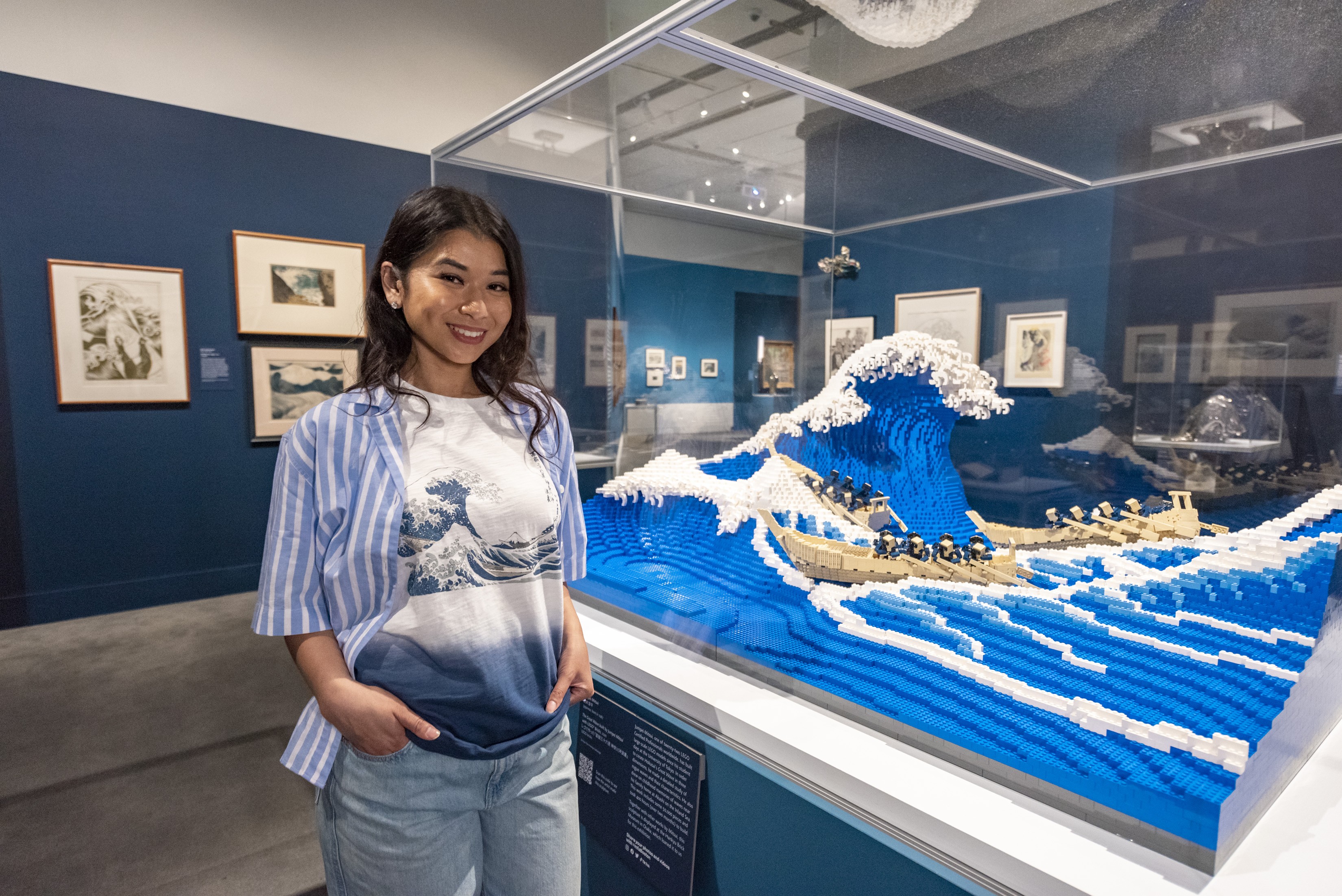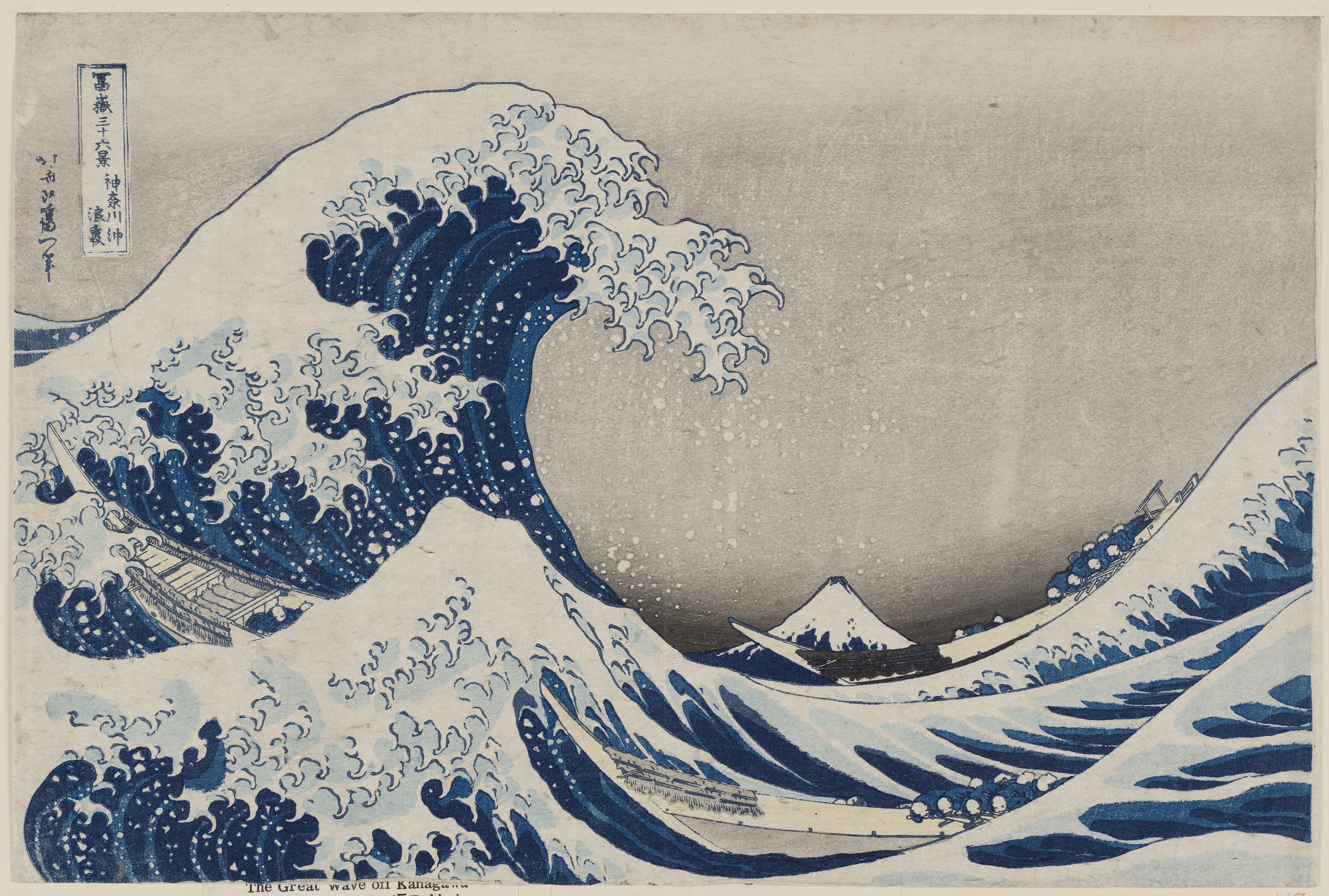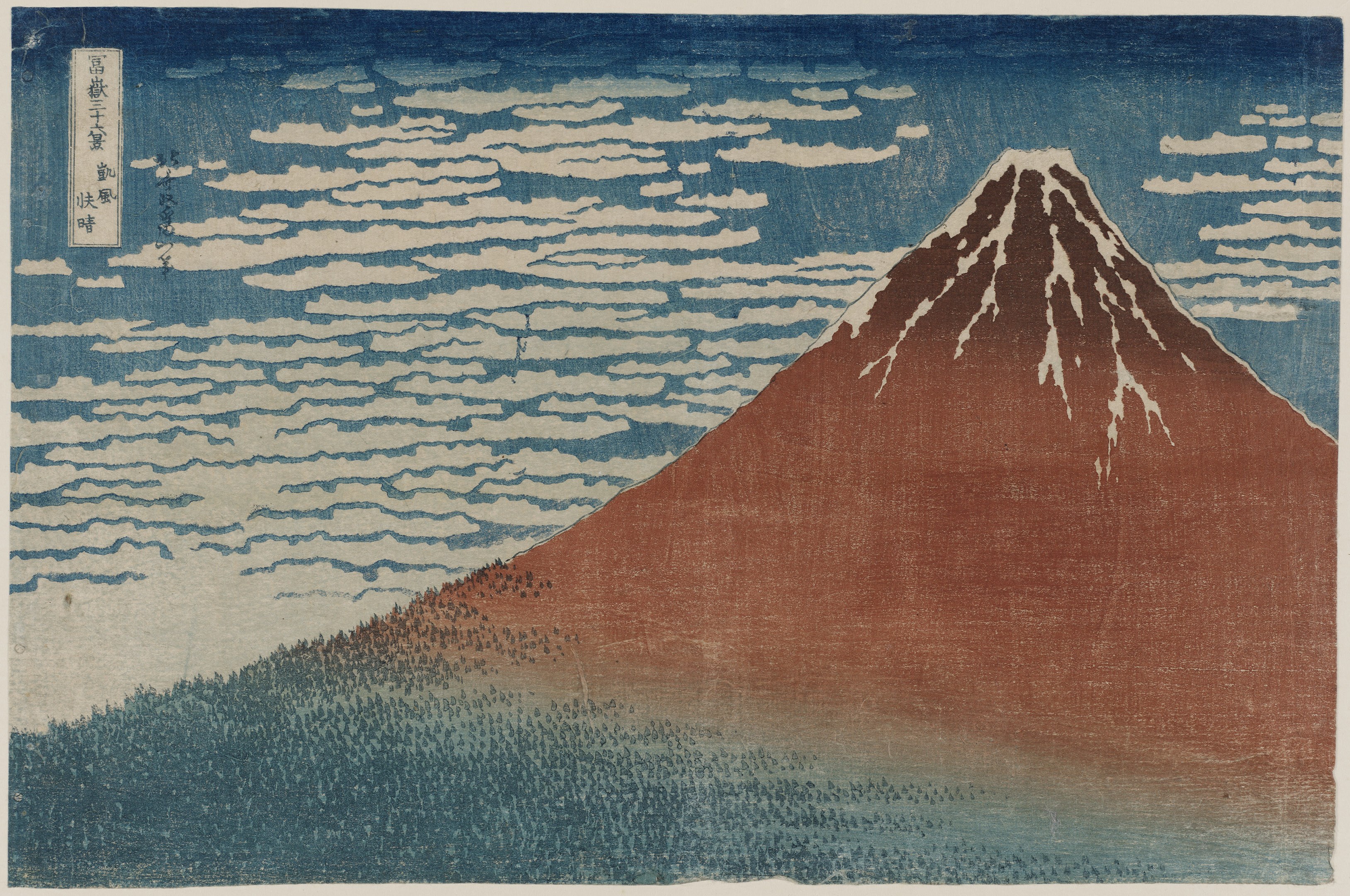10 Instagrammable Works of Art You Don’t Want to Miss at the MFA’s Hokusai Exhibition

Visitors in the exhibition Hokusai: Inspiration and Influence at the Museum of Fine Arts, Boston. With art object:
The Great Wave built with LEGO® Bricks by Jumpei Mitsui 2021 * Reproduced with permission April 22, 2023 * Ann and Graham Gund Gallery * Photograph © Museum of Fine Arts, Boston
Certain artists can leave a mark on our cultural imagination so strong that they change the way we all see the world–sometimes without us even realizing it. You may or may not instantly recognize Hokusai’s name, but you likely know his masterpiece, Under the Wave Off Kanagawa, which has been reproduced everywhere from book covers to an emoji. His vision of the natural world has had such a profound impact on the history of art that a vast number of artists across the globe are working in its wake, whether looking to him as a direct influence or not.
The new exhibition “Hokusai: Inspiration and Influence” at the Museum of Fine Arts, Boston is tackling that theme of Hokusai’s legacy, featuring works from the master, his students, and his devotees down the years, from the 19th century to today. The show is sponsored by UNIQLO, a longtime MFA supporter that shares the museum’s mission of making art for all. The models pictured here are wearing T-shirts from a UNIQLO UT line up featuring Hokusai designs from the MFA’s collection, which are available at UNIQLO stores, online, and at the museum’s store.
To give you an insider’s look at the exhibition, we spoke to MFA curators about some of the most fascinating pieces that reflect, in many different forms, some of the spirit of an artist who changed the world. After you visit, make sure to share your experience on Instagram for a chance to win a UNIQLO gift card. Follow @mfaboston for more details.

Under the Wave off Kanagawa (Kanagawa‑oki nami‑ura), also known as the Great Wave, from the series Thirty‑six Views of Mount Fuji (Fugaku sanjûrokkei) Katsushika Hokusai (Japanese, 1760–1849) about 1830–31 (Tenpô 1–2)
Woodblock print (nishiki‑e); ink and color on paper * William Sturgis Bigelow Collection * Photograph © Museum of Fine Arts, Boston
Katsushika Hokusai, Under the Wave Off Kanagawa (about 1830-31)
The MFA has had a deep commitment to Japanese art for more than a century, and one of the most renowned pieces of the collection is Under the Wave Off Kanagawa, often simply called The Great Wave. A small, woodblock print once seen as something created for popular distribution, it ended up traveling the globe, reshaping people’s idea of depictions of the sea and the natural world.
“As to why it became one of the most famous images in the world, I think part of the answer is that because it means so many different things to different people,” says Sarah Thompson, curator of the exhibition and of Japanese art at the MFA. “As I think you can see in the exhibition, people have gotten a lot of different kinds of messages out of it. The original picture has a narrative element that is ambiguous, for one, but people have also interpreted that wave metaphorically in many different ways. Is it overwhelming emotion, being swamped by some problem? Is it a positive thing? Is it the awesome beauty of nature?”

Fine Wind, Clear Weather (Gaifû kaisei), also known as Red Fuji, from the series Thirty‑six Views of Mount Fuji (Fugaku sanjûrokkei) Katsushika Hokusai (Japanese, 1760–1849) about 1830–31 (Tenpô 1–2) Woodblock print (nishiki‑e); ink and color on paper * Nellie Parney Carter Collection—Bequest of Nellie Parney Carter * Photograph © Museum of Fine Arts, Boston
Katsushika Hokusai, Fine Wind, Clear Weather (Gaifū kaisei), also known as Red Fuji (about 1831)
From the same series as The Great Wave, this print is one of 36 depictions of Japan’s physically and culturally momentous Mount Fuji (the number of prints later grew due to the series’ popularity). Focusing on the same subject for a series was innovative at the time, but Hokusai’s innovations weren’t limited to this approach–his application of the Japanese ukiyo-e printmaking form to the natural world was a distinctive and surprising decision, given that its subject matter was traditionally urban, character-driven scenes. This print, with its distinctive use of color, is as notable as The Great Wave in Japan, according to Thompson.
“Until recently, in Japan, it was the Red Fuji that was the most famous print in the series, as the thing that people think of when they think of Hokusai,” Thompson says. “I think now, perhaps because the Wave has become so famous in the rest of the world, it has kind of caught up with Red Fuji even in Japan.”

Drowning Girl, Roy Lichtenstein (American, 1923–1997) 1963, Oil and acrylic on canvas * The Museum of Modern Art, New York. Philip Johnson Fund (by exchange) and gift of Mr. and Mrs. Bagley Wright, 1971. Accession Number: 685.1971 * © Estate of Roy Lichtenstein. * Digital Image © The Museum of Modern Art/Licensed by SCALA / Art Resource, NY * Courtesy Museum of Fine Arts, Boston
Roy Lichtenstein, Drowning Girl (1963)
Pop artist Roy Lichtenstein famously liked to mimic and explore mass-produced, commercial forms, so it’s no surprise that he was a fan of Hokusai. What may be surprising is that one of his most famous works, Drowning Girl, was inspired by Hokusai’s Great Wave. Lichtenstein believed that the water depicted in the comic he based this painting on may have been influenced by Hokusai’s work, and he sought to draw that influence out for the viewer in Drowning Girl.
“He’s the master of mixing the high and the low in a way that bridges fine arts with a more popular and more accessible, perhaps low-brow art aesthetic. So the correlation between him and Hokusai makes perfect sense,” says Kendall DeBoer, curatorial assistant at the MFA who worked on sourcing contemporary pieces for the exhibition.
Jumpei Mitsui, The Great Wave built by Jumpei Mitsui with LEGO® Bricks (2020)
The Great Wave inspired so many global artists in part because it combined the two-dimensional quality of traditional ukiyo-e prints with European-style depth of perspective. Turning it into a 3D form yields a whole new array of insights, according to Thompson, who had this work brought over from Japan for the exhibition.
“People often get confused and think there are only two boats, but in this work you can see clearly there are three,” Thompson says. “They’re wading in slightly different directions, and actually one boat appears to be pointing right at the wave in the print, aiming a little to the side of it. They’re hoping to go around it.”
Yoshitomo Nara, No Nukes! From the series In the Floating World (1999)
The concept of flat depictions of the world has had a continued influence in the Japanese art world into the present day. Recently it has re-emerged as an influence on a major art movement: “Superflat” artists often take inspiration from flat images stemming from Japanese and global popular culture. One of its most notable affiliates, Yoshimoto Nara, takes that inspiration directly back to the source in a series featured in the exhibition, called In the Floating World (the English translation of ukiyo-e), in which he scrawls graffiti-like images and messages on printed out copies of Hokusai and his students’ work.
Mika Ninagawa, Portrait of Yuzuru Hanyu (2022)
As Thompson points out, the composition of The Great Wave, the way it manages to convey the power of nature in such a small print, may well be part of its lasting success. The impact has lasted with such strength that when this photograph of Olympic ice skater Yuzuru Hanyu appeared on social media in 2023, people began sharing it with her thinking it reminded them of Hokusai. Does it simply resonate with The Great Wave’s ability to leap off the page thanks to the shared quality of their compositions, or did the photographer take direct inspiration? Thompson has let that question remain a mystery.
Yayoi Kusama, Where the Universe and Human Life Are (2014)
The exhibition also features work explicitly not influenced by Hokusai–but still exploring the same subjects and themes. Yayoi Kusama is a contemporary artist who has become broadly popular for her immersive installations, but here, she chose to depict Mount Fuji on paper–reinforcing the cultural importance of the mountain that defined Hokusai’s legacy.
“The thing about Mount Fuji is it’s such a visual icon in Japan, it’s so famous,” Thompson says. “It’s kind of eye opening in terms of the different possible relationships between works of art to have at least a few in which really, there’s not a direct relationship.”

Visitors in the exhibition Hokusai: Inspiration and Influence at the Museum of Fine Arts, Boston. With art object:
Boru Sibaso Paet, on the foam of the primordial sea. Linda Sormin 2023. Mixed-media installation * Courtesy of the artist, Patricia Sweetow Gallery, and United Contemporary. April 22, 2023 * Ann and Graham Gund Gallery * Photograph © Museum of Fine Arts, Boston
Linda Sormin, Boru Sibaso Paet, on the foam of the primordial sea (2023)
One of the experiential highlights of the exhibition, Linda Sormin’s installation, an extant work that’s been restructured for the space, lets viewers dive into the broad array of memories and associations that Sormin herself feels as an artist. Blending video, sculpture and found objects, it’s a fun way to engage directly with the themes of influence that ripple through the exhibition (museumgoers are encouraged to walk around and through the artwork, literally gaining a new perspective on the other works in the collection).
Judith Schaechter, Dream of the Fisherman’s Wife (2004)
Hokusai’s work during his long career (he lived to the age of 88) tackled several genres and mediums, including book illustrations. The most famous of these illustrations was a piece of erotic art, known as The Dream of the Fisherman’s Wife, originally titled Octopus and the Shell Diver. Schaechter, a contemporary artist and a master of the stained glass medium, created a triptych that combines inspiration from Hokusai’s work with allusions to The Birth of Venus by Botticelli–creating a complex series of associations for the viewer to interpret.
Taiko Chandler, Blue Surge (2023)
The final work as you move through the exhibition, Taiko Chandler’s Blue Surge, will remind you of the power of the Great Wave and how contemporary art has a new range of means to express an artist’s vision. Like Hokusai’s work, it’s created from humble materials, but nevertheless succeeds in stunning the viewer.
When Taiko Chandler moved to the United States, she was unable to work as a nurse, which is her trained profession, because of her visa status,” DeBoer says. “That’s why she turned to art-making, and because Tyvek is a cheap, mass-produced material, that’s one of the reasons she was able to access it. So even though she hand-reproduces every single one of her images, there is this element of cheap accessibility of a reproduced commodity that is the base upon what she builds, and then elevates through a process that is extremely laborious and intense.”
“Hokusai: Inspiration and Influence” is on view through July 16. Reserve your timed ticket today, or become a member to see it at no additional cost.
This is a paid partnership between Museum of Fine Arts Boston and Boston Magazine